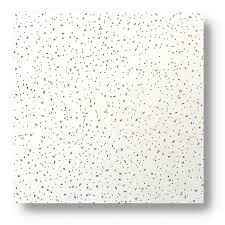9 月 . 23, 2024 06:50 Back to list
ceiling tile grid
Exploring the World of Ceiling Tile Grids
Ceiling tile grids are often an unnoticed yet essential component of modern architecture and interior design. These frameworks provide structural support for ceiling tiles, which serve not only aesthetic purposes but also functional roles such as soundproofing, insulation, and hiding unsightly wiring or ductwork. In this article, we'll delve into the significance of ceiling tile grids, their construction, and their variety of applications.
First, let’s take a look at what a ceiling tile grid entails. Typically made from lightweight metal or PVC, a ceiling tile grid consists of a system of main runners, cross tees, and perimeter trim that create a suspended ceiling. This grid system allows for the easy installation of ceiling tiles, which can be made from various materials including mineral fiber, metal, and gypsum. One of the most significant advantages of using a ceiling tile grid is that it enables quick removal and replacement of tiles. This feature is particularly beneficial for maintenance and repair work, allowing access to pipes and electrical systems hidden above the ceiling.
The design of ceiling tile grids can also significantly affect the acoustics of a room
. Many commercial spaces, such as offices, schools, and hospitals, incorporate soundproof ceiling tiles within the grid systems to enhance sound absorption. By minimizing echo and controlling noise levels, these grids contribute to environments that support productivity and comfort—key elements in any workspace or public area.ceiling tile grid

Moreover, ceiling tile grids play a critical role in thermal insulation. In areas where climate control is essential, the choice of ceiling tiles and their combination with the grid system can impact energy efficiency. Some tiles are specifically designed with insulating properties, helping to maintain indoor temperatures and reduce heating and cooling costs. This practical application further underscores the importance of ceiling tile grids in contemporary building practices.
Aesthetic appeal is another notable benefit of ceiling tile grids. Ceiling tiles come in a wide array of colors, patterns, and textures, allowing architects and designers to create visually striking ceilings that complement the overall theme of a space. Whether designing an elegant restaurant, a modern office, or a cozy home, the flexibility offered by ceiling tile grids allows for endless creative possibilities. Custom-designed ceiling tiles can even serve as unique focal points, enhancing the overall atmosphere of a room.
In addition to commercial and residential applications, ceiling tile grids have made their mark in specialized environments such as hospitals and laboratories. In these settings, tiles may be manufactured to be moisture-resistant and treated to prevent the growth of mold and mildew. This functionality ensures that the ceiling remains intact and hygienic, which is crucial for maintaining health standards in sensitive environments.
In conclusion, ceiling tile grids are more than just structural frameworks; they are pivotal in achieving aesthetic, acoustic, and thermal objectives in various settings. Their versatility and practicality make them indispensable in both commercial and residential applications. With numerous options available, designers and architects can effectively leverage ceiling tile grids to enhance both the functionality and appearance of interior spaces. As we continue to innovate in design and construction methods, the importance of these often-overlooked elements will only grow, contributing to the creation of better, smarter environments.
-
Revolutionizing Interior Design with Ceilings t grid Suspended SystemNewsOct.29,2024
-
Revolutionizing Ceiling Design with ceiling access panel with Gypsum Tile WaterproofNewsOct.29,2024
-
Revolutionizing Interior Design with PVC Gypsum Ceiling: A Comprehensive GuideNewsOct.29,2024
-
Elevating Interior Design with High quality Mineral Fiber Ceiling TilesNewsOct.29,2024
-
Revolutionizing Interior Design with PVC Gypsum Ceiling: A Comprehensive GuideNewsOct.29,2024
-
Elevating Interior Design with High-Quality Mineral Fiber Ceiling Tiles: A Comprehensive GuideNewsOct.29,2024







